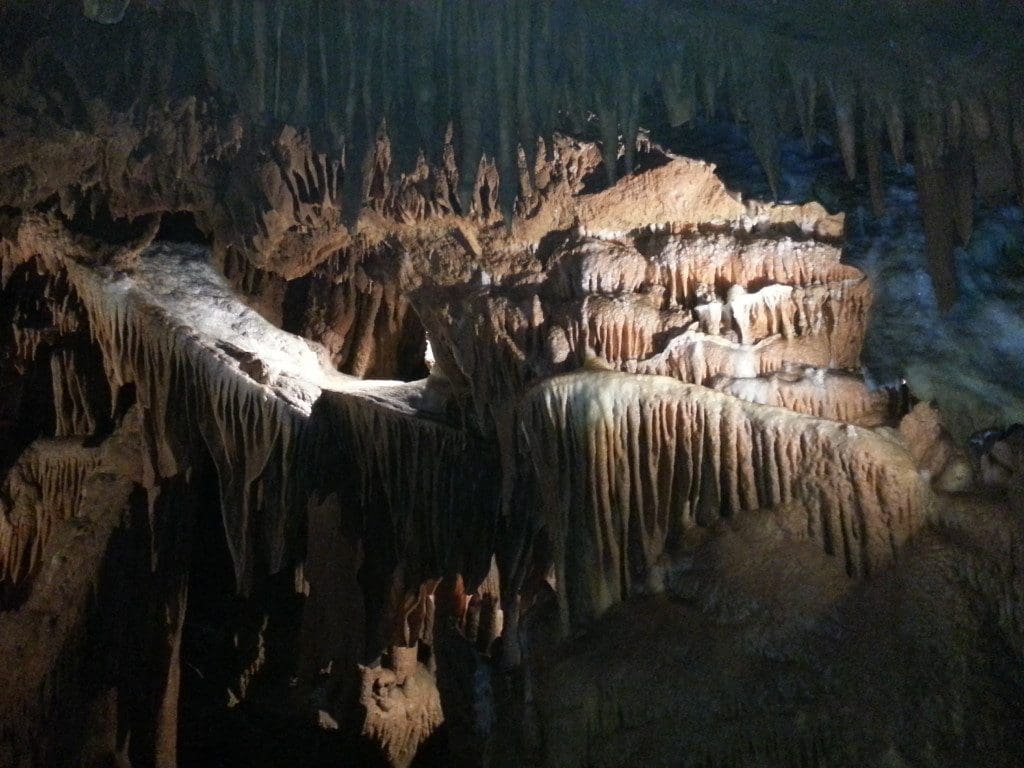 Virginia’s beautiful landscapes include beaches, wetlands, rolling hills and ancient mountains, but she also has underground treasures. Eight significant cavern sites stretch along the Valley of Virginia, which lies between the Allegheny Mountains and the Blue Ridge Mountains, roughly the path followed by I-81. On a recent weekend, Todd (aka Mr. Travel Maestro) and I took a leisurely drive to the Shenandoah Valley to visit Grand Caverns in Grottoes, Virginia.
Virginia’s beautiful landscapes include beaches, wetlands, rolling hills and ancient mountains, but she also has underground treasures. Eight significant cavern sites stretch along the Valley of Virginia, which lies between the Allegheny Mountains and the Blue Ridge Mountains, roughly the path followed by I-81. On a recent weekend, Todd (aka Mr. Travel Maestro) and I took a leisurely drive to the Shenandoah Valley to visit Grand Caverns in Grottoes, Virginia.
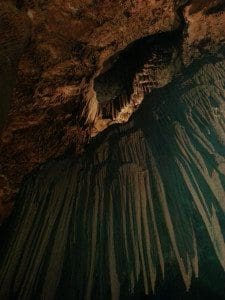
I’ve always been infatuated by caves. I’m amazed by the persistent forces of nature, be it flowing water or tectonic shifts that created the secret world concealed from the daylight. The eons of time it took for the cave to be sculpted into its current form is practically unfathomable. Inside the cave, my imagination sees whimsical characters in the ancient rock formations, but when the lights are extinguished, the subterranean blackness is almost palpable.
Grand Caverns has nine or ten large rooms, each named after their dominant formations, and there was no squeezing through tight spaces on our tour. As much as I like caves, I can pass on the claustrophobia-inducing parts, so this was just my speed.
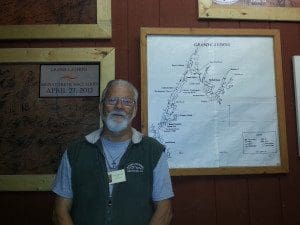
At one point, our excellent guide, Tom, pointed out that the highest ceiling visible through an opening overhead was about 100 feet high! We were Tom’s only two guests on the mile and a half subterranean tour, so I got to ask tons of questions and take photos without others milling about in them.
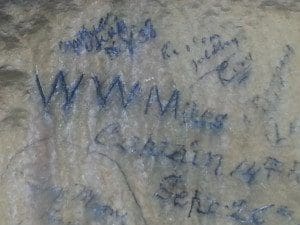
Grand Caverns has had multiple owners and names since its discovery in 1804. The first owner opened it for tours in 1806, giving it the distinction of being the Oldest Show Cave in North America. Both Confederate and Union soldiers took respite in the caverns during the Civil War, as many verified signatures of the era can attest. Since caves take on the mean temperature of their locations, Grand Caverns stays at a constant 54°, which was natural air conditioning for the soldiers during the hot and humid Virginia summers.
Grand Caverns Formations
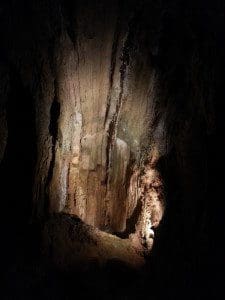
But the real star exhibits are two unique geological features. First, other caves of the Shenandoah were formed in horizontal limestone layers. Most are solutional caves, meaning that ground water dissolved and eroded limestone to form the cave. Grand Caverns is the only cave system to have vertical bedding, meaning the layers of limestone were turned on end – vertical, instead of horizontal – by tectonic forces. You can easily see the vertical layers in the caverns ceilings.
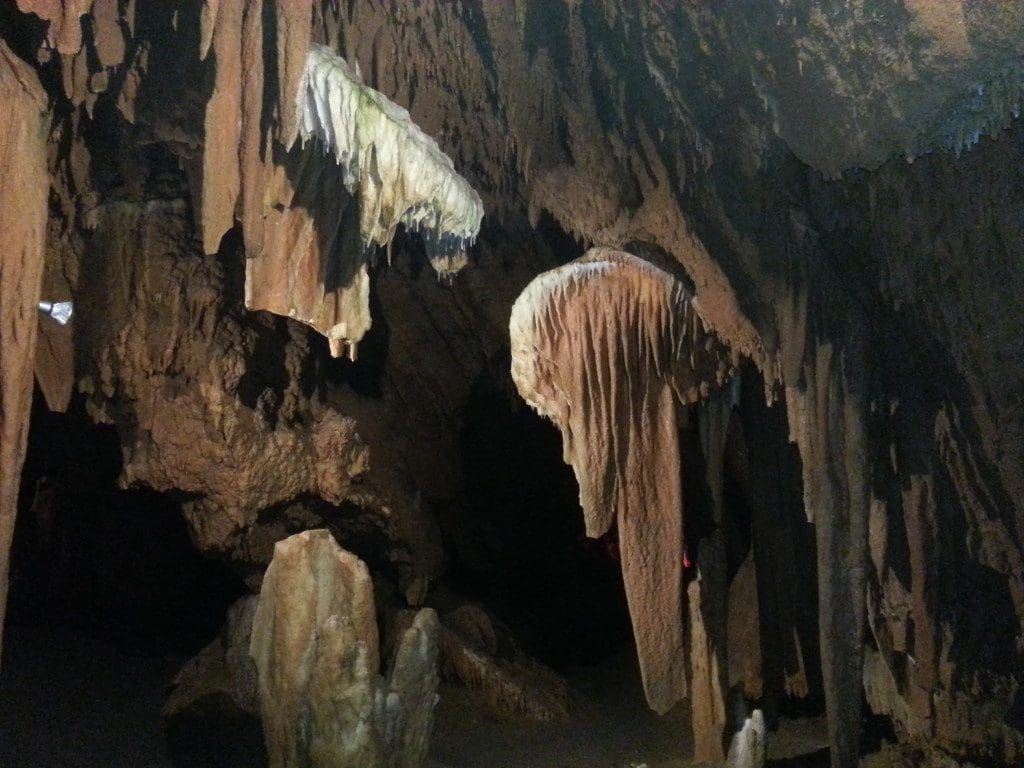
The second unusual geological configuration is an abundance of cave shield formations – hundreds of them. Shields grow out of the rock, most at about 45°, with two parallel plates similar to a giant clam shell made of stone. Scientists are baffled as to how they are actually formed and they are quite rare in other caves.
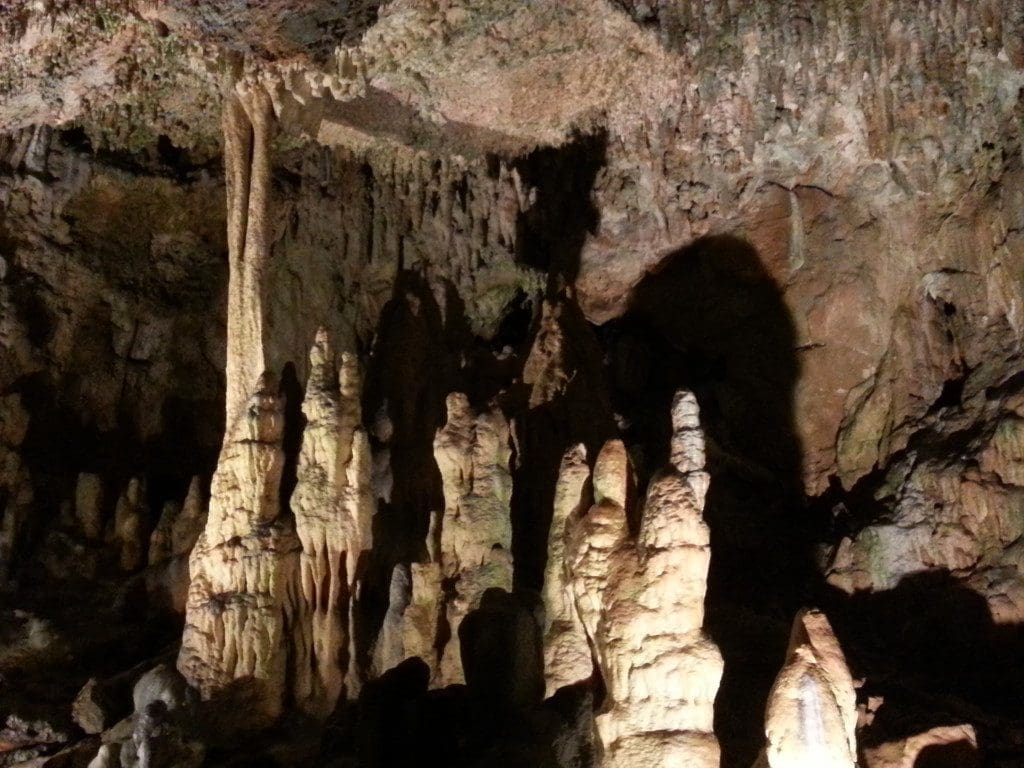
Other more typical formations found in Grand Caverns are stalactites (hang from the ceiling), stalagmites (grow up from the floor) and columns (when the two meet and grow together). Grand Caverns also has cave popcorn that looks like ocean coral on the ceiling.

The drapery formation occurs when water flows down only one side of a stalactite and it develops folds that look like draperies. These can be quite dramatic and my favorites were the ones in Grand Caverns known as ‘cave bacon!’
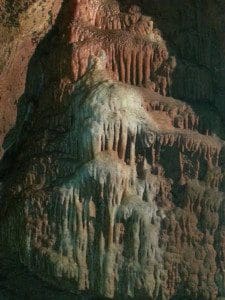
Flowstone covers most of the walls and floors of Grand Caverns. Water flowing over a cave surface creates continuous calcite deposits that look like a waterfall. These are spectacular in Grand Caverns.
Grand Caverns currently runs tours Monday through Friday on the hour from 10:00am – 5:00pm, Saturday and Sunday tours run every 45 minutes from 9:30am – 5:00pm. To plan your own Virginia exploration, chat with our friendly vacation specialists.






Leave a Reply